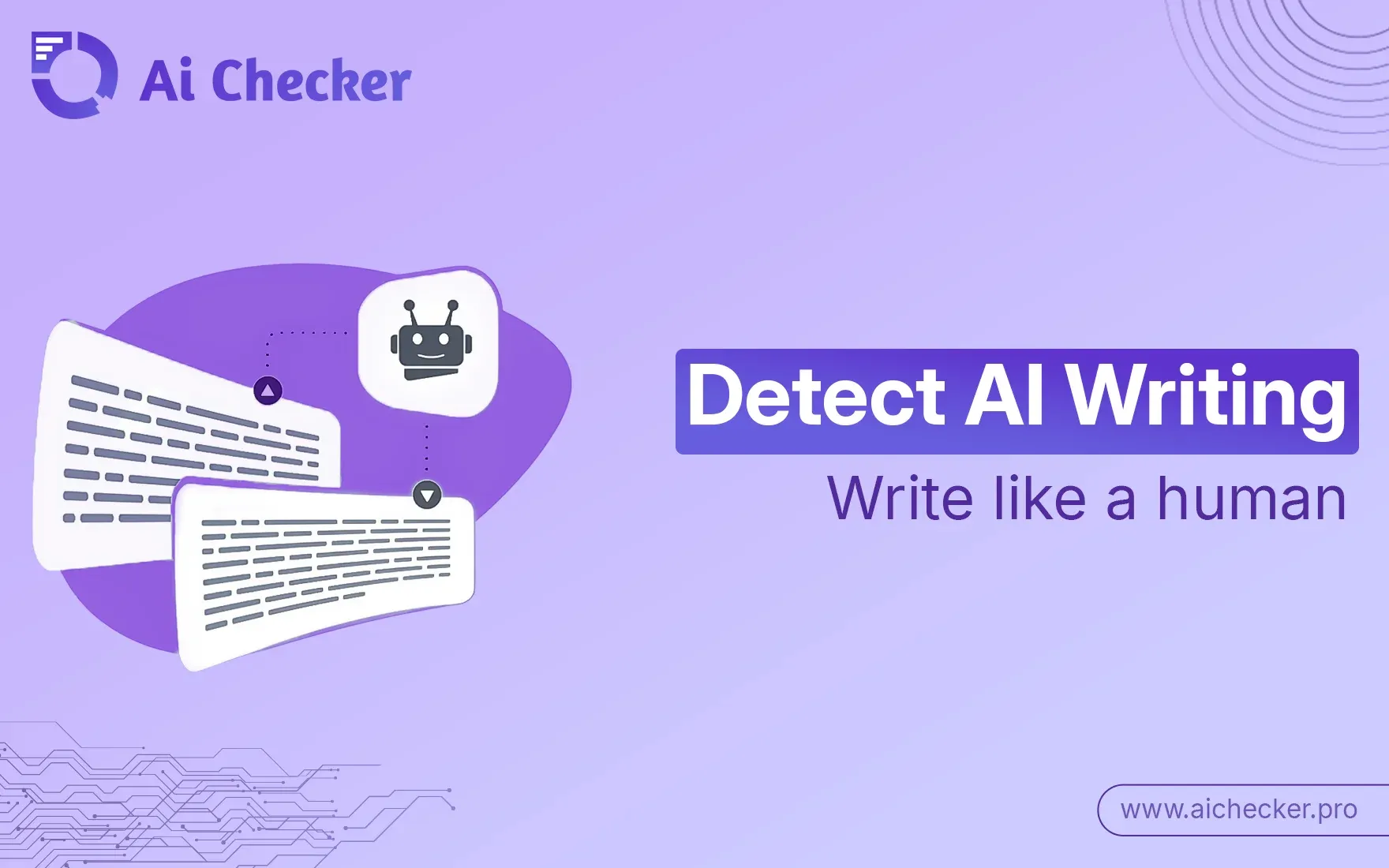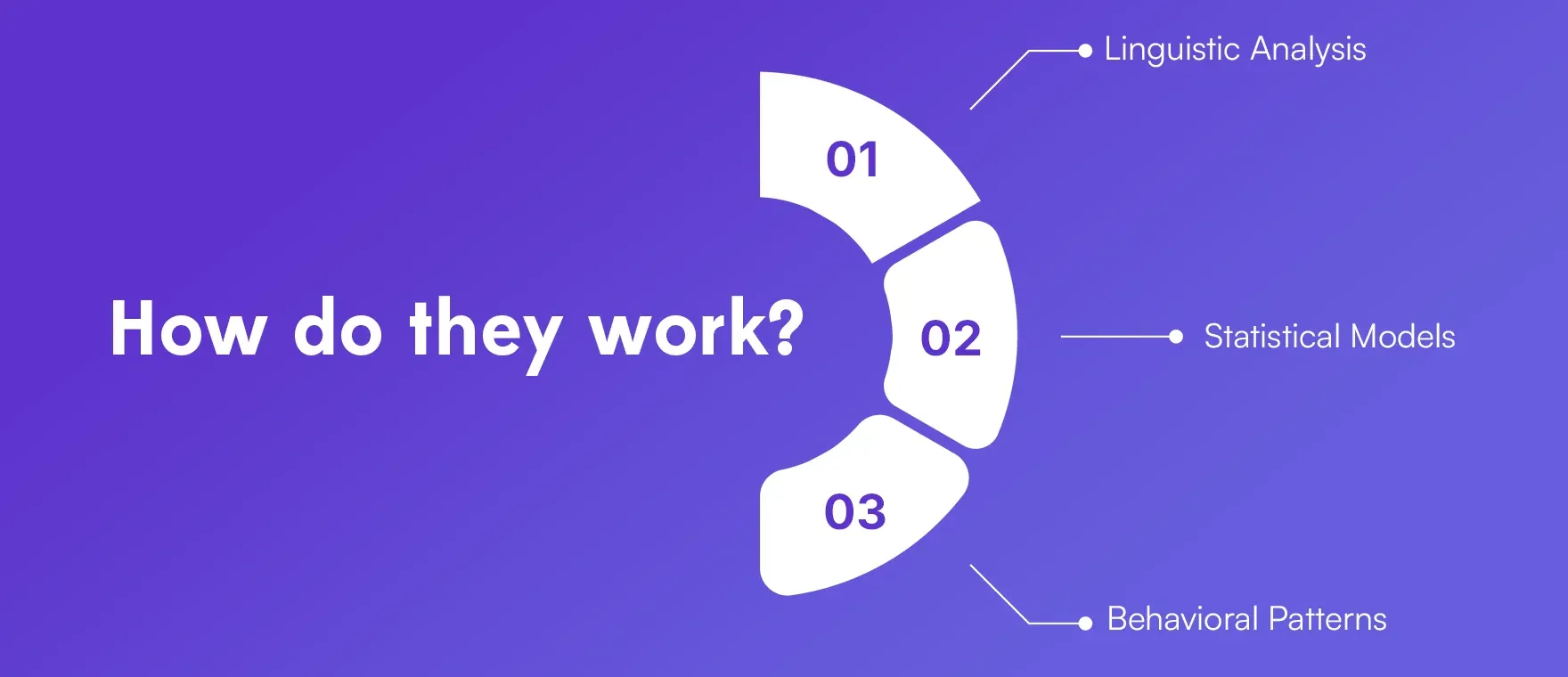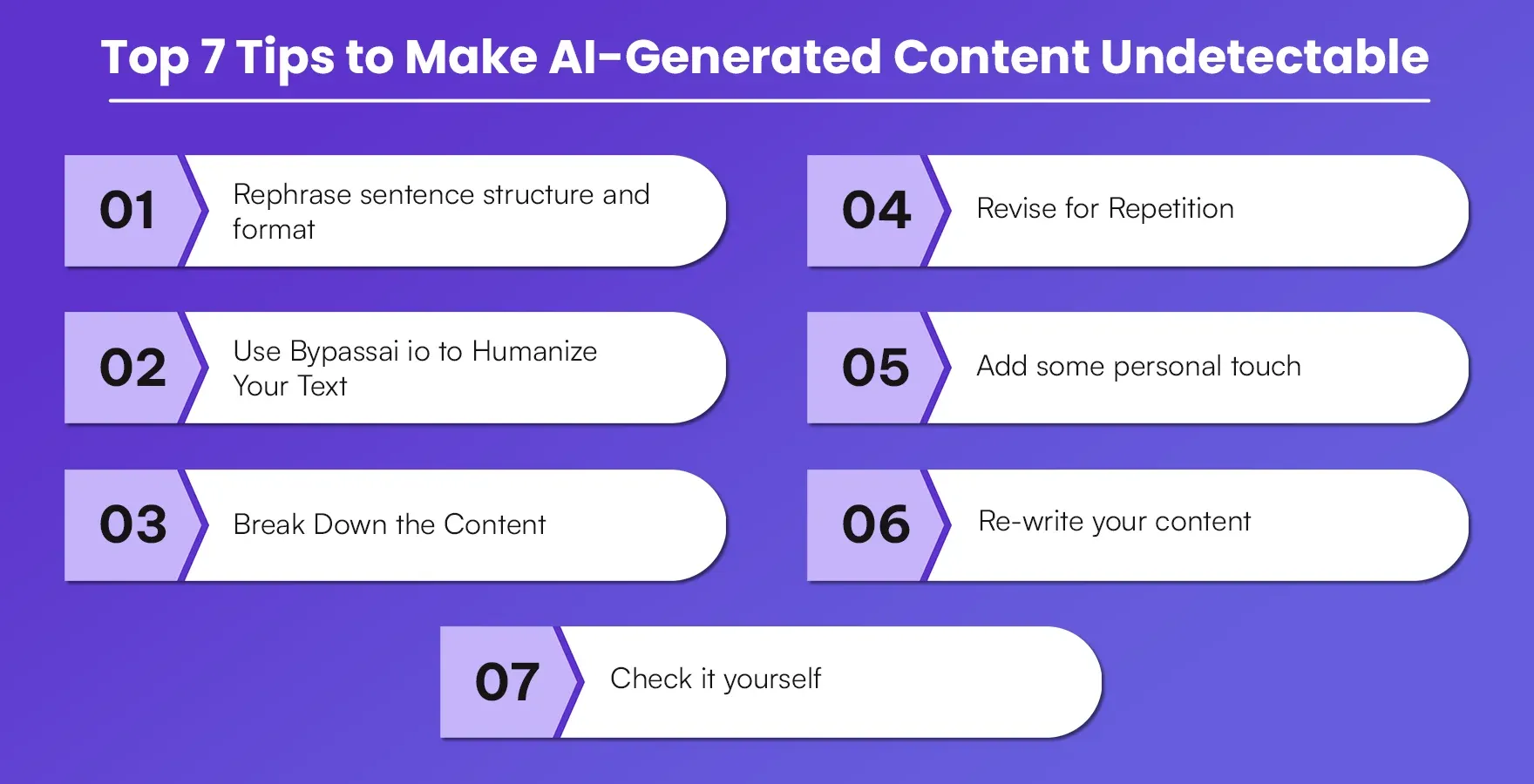Sign In
Welcome to AI Checker Sign in to continue your exploration of our platform with all its exciting features.
Forgot Password?
Don’t have an account ? Sign Up
Forgot Password
We'll Send You An Email To Reset Your Password.
Back to Login
Sign Up
Embrace the Future with AI Checker Sign up now and let's rewrite the possibilities together.
Already have an account? Sign In
Enter OTP
We'll send you an email to reset your password.
Back to Login
Enter OTP
We'll send you an OTP on your registered email address.
Back to Login
Confirm Password
Please enter your new password.
How to Detect AI Writing - Write like a human
 Nathan Porter
Nathan Porter
TABLE OF CONTENTS
Quick Summary
What are AI Content Detection Tools?
How do they work?
Do AI content detectors have perfect accuracy?
Does Google Accept AI-generated Content?
Top 7 Tips to Make AI-Generated Content Undetectable
Conclusion
FAQs
AI generated content is getting ubiquitous in online media thanks to the fast development of artificial intelligence techniques. In parallel with the growing presence of AI written text, there emerges a need for AI-based tools that are able to detect whether a given piece of content has been generated by an human or by an AI algorithm. Thus, this has motivated several proposals for AI content detection tools with the objective of ensuring transparency and fidelity in the information we consume.
Quick Summary
AI content detectors are built to determine if a piece of content was written by an AI or not. They draw on a mix of algorithms and techniques to evaluate the text’s structure, style, and patterns. While they’re becoming more advanced all the time, these detectors aren’t perfect. In this guide, I’ll explain how you can bypass AI detectors, dig into how AI content detectors actually work, their level of accuracy, Google’s position on AI-generated content and provide some best practices to create AI-generated content that is harder to detect.
What are AI Content Detection Tools?
When AI systems try to recognize text, they look at what words are in it to deduce if it was a person or a machine that made the text. They’ll look at the word you used, at how you built the sentence, at grammar rules and even how hard (or not) reading your text is to get. Here are some things that the tech might see.
When you consider the vocabulary used and the difficulty of the text, this mechanism can determine that an AI like ChatGPT or Jasper wrote a piece. AI generated text can be more repetitive and pattern-like than human-written text and, therefore ,requires more complexity and nuance from human language.
Text produced by AI can often lack the tiny mistakes or flaws that exist within human written text, and yet AI based detectors could still detect it given the diversity of language and style cues present in the text.
How do they work?
AI content detectors work by employing various techniques:

Linguistic Analysis: Analyzing the sentence structure, grammar, and word choice of the text for any irregular or recurring patterns typical in human writing.
Statistical Models: We train machine learning models on large datasets of both human and machine-written text, and use these models to pick the most likely completion to a partial sentence.
Behavioral Patterns: Analyzing the behavior of the content, such as repetitive use of certain phrases or unnatural wording, overuse of certain keywords that may suggest it was generated by AI.
It’s a little too recursive to be used directly on the output of the model, but it can be used to analyze metadata like time stamps, writing speed, and editing history of whether something could have been written by that model.
Do AI content detectors have perfect accuracy?
AI content checkers aren't perfect. There are a couple of things that impact how well they perform. This includes how the technology performs inherently and how it's designed. Accuracy Levels
General Limitations: AI scanners function based on probabilities and patterns derived from data sets of human and AI writing. They are educated guesses, not known certainties. As such, they cannot be correct 100% of the time. They occasionally make mistakes by misidentifying human writing as AI (false positive) or by not flagging the AI-written material (false negative).
Performance Metrics: Studies show that the average accuracy rate of various AI detectors is about 60%. The best ones can reach the precision of 84%. But still, there is an error margin, especially in case of advanced or convoluted works.
Variability Among Tools: Different AI filters are based on different datasets and formulas. Therefore, the results will be different for each of the services. Some are good for some tasks while not performing well for others. It is difficult to rely only on one filter.
Does Google Accept AI-generated Content?
Google’s take on AI-generated content is rather convoluted. The search giant won’t outrightly blacklist text written by an algorithm, but it does stress on the relevance and quality of the text it indexes. Google values content that helps, educates or entertains readers — whether it’s human-created, or computer-created.
But in order for AI-generated content to meet these criteria, the truth is that we need to make improvements so it can deliver real value – combining deep research, unique perspectives and a tailored approach that resonates with human beings.
Read more: Does Google Penalize AI Content?
Top 7 Tips to Make AI-Generated Content Undetectable
To make AI-generated content undetectable, blend complex and simple sentences, use varied vocabulary, insert personal anecdotes, mimic human tone, and avoid repetition. Add unique insights and ensure the content flows naturally without rigid patterns.

1. Rephrase sentence structure and format
Content made by AI has a common structure. To make your text sound more human, use sentences with different structures and lengths. You can mix simple, compound and complex sentences. Also, change the order in which information appears in the sentence. It’s good to start with a part of the sentence that doesn’t usually come at the beginning - a phrase or clause. This scrambling creates a less baseline-y effect and fools people better.
2. Use Bypassai io to Humanize Your Text
Bypassai IO is a neat tool for people who want their AI generated text to be more like something a human might write. It reads through your text and gives suggestions on how to make it more engaging and emotional. With a tool like this you can focus on parts where the language feels robotic or too formal, apply the proposed changes, and inject some life and personality in your writing so it will better resonate with the reader.
3. Break Down the Content
AI text often comes in big chunks. Chop it up! Make your content snackable. Like how humans do it. Small ideas, easy to understand. Break it up with mini titles. This shows readers the path through your story or point of view.
4. Revise for Repetition
AI Content can sometimes repeat the same ideas or words. To increase uniqueness, read through your text and find any repetition. Replace repeated words with others that have the same meaning, and make sure that you are making points that add value to the overall theme of the text. This will make your text better, as well as less likely to be seen as AI written.
5. Add some personal touch
Adding your own stories, opinions, or life experiences can really humanize your work. Readers tend to connect more with articles that express genuine emotions and unique perspectives. Share stories or expertise relevant to the topic you are writing about, and don't be afraid to voice your thoughts. This personal touch not only makes your work more interesting but also distinguishes it from generic AI-generated content.
6. Re-write your content
When re-writing text created by an AI, take the time to completely overhaul chunks of it; this doesn’t mean small edits here and there but wholesale word choices, sentence rhythm changes, or even having to set up an entirely new story or argument. Not only will this ensure it is far less recognisable as the work of a machine but it also allows you the space to infuse your voice and personality.
7. Check it yourself
Don’t forget to sanity-check your content before you hit publish. Reading it out loud is one way to flag if you’ve got weird phrases or awkward rhythms in there. You can also try using things like grammar-checking tools or readability testers to help clean up your writing. And bouncing ideas off friends helps you figure out pretty quickly if what you’re putting out there resonates with others. This part is really important because it’ll help ensure that what you produce is both real and interesting.
Conclusion
AI-generated writing is all around us, but it’s not easy to make sure it feels genuine and unique. Even if an AI Content Detector would be able to identify a piece of AI text, it could give false alarms and not spot obvious tells only a human can write. Or an AI tool could assume some human-written text is actually machine written. We can have a little more fun with our AI text! Re-arrange those sentences, dumb things down, do whatever you think might get past the scanners and work with your human audience better. Trust me…they’ll keep reading! It doesn’t matter where the words came from as long as you build trust with them.
FAQs
1. What are the identification tools in AI?
AI object recognition systems analyze structure,style and style of text whether it is written by human author or AI author.
2. How accurate are AI content detectors?
The accuracy of AI content detectors is between 60-84%. They might not always get it right and can sometimes mistake the owner of a text.
3. Does Google reject AI-created content?
Google doesn’t outrightly ban AI-generated content, but it does stress the importance of creating content that is valuable, helpful and interesting no matter where it came from.
4. What are some common characteristics of AI products?
Some common symptoms are recurring sentences, not so smooth flow, overuse of some specific key words and no personal touch or indirect speech.
5. How do I make AI-generated objects less visible?
You can make AI-generated text less predictable by rephrasing sentences, rearranging text, throwing in a word of your own every so often, and tweaking it for redundancy or to better parallel construction.

Nathan Porter
Content writer at @Aichecker
I am a content writer at AI Checker Pro, where I craft engaging, SEO-optimized content to enhance brand visibility and educate users about our AI-driven solutions. My role involves creating clear, impactful messaging across digital platforms to drive engagement and support company growth.


